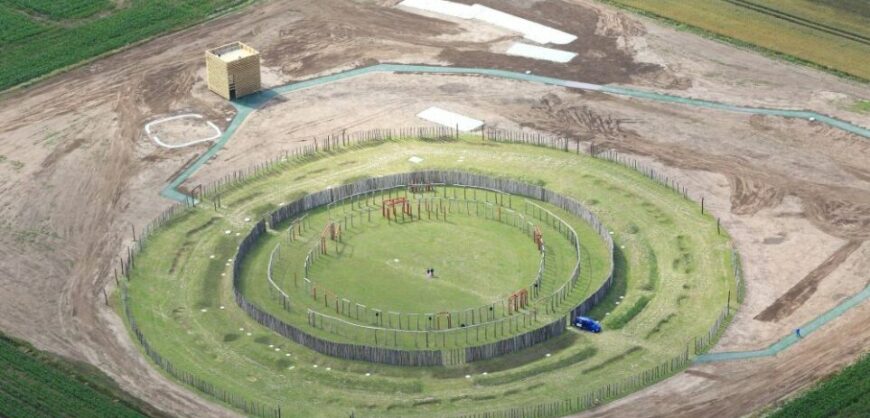The German “Stonehenge” is claimed to have been discovered by archaeologists, about 136 kilometers southwest of Berlin.
The prehistoric monument is located near the village of Pömmelte – about 136 km southwest of Berlin – and is called “Ringheiligtum Pömmelte”, meaning “Sanctuary of the Ring of Pömmelte”.
It is an ancient site, known for its ritual use and the abominable burials of people. However, according to archaeologists, who recently found evidence of residential housing, it served another purpose.
The archeological dig, from May, when the excavations began, located the remains of two houses, 20 graves and two human burials during excavations that began in May, according to the Heritage Daily. Archaeologists continued to uncover more houses. A total of 130 homes were located in the area.
Larger than Stonehenge
The findings show that the site functioned as a place of ritual with great value during the transition from the Neolithic to the Bronze Age.
Researchers in the journal “Antiquity” talk about a German Stonehenge. The researchers hope that the findings will shed light on the relationship between the space used for rituals and the space used for residential purposes.
Denmark says non-western immigration cost state nearly $5 Billion per year
The prehistoric monument of circular shape was located by archaeologists in 1991. The wooden pillars of the sanctuary were once arranged in various concentric circles, with the largest being about 115 meters in diameter, according to Live Science.
The diameter means that the Ringheiligtum Pömmelte was slightly larger than Stonehenge in the United Kingdom, which is just over 100 meters in diameter, according to the English Heritage charity, which helps protect hundreds of historic sites in England.
Archaeologists also discovered graves containing broken bones of children, adolescents and women who may have been violently killed during human sacrifice, according to a 2018 study published in the journal “Antiquity”. Axes, pottery, animal bones and stone mills were previously found, according to the study.
The new find is the first case of a residential zone in the area, dating from the late Neolithic period to the early Bronze Age, or from 2300 BC. around 2050 BC, when it was destroyed.
According to archaeologists, ancient people celebrated astronomical events at the Ringheiligtum Pömmelte, which also served as a burial ground for rituals and ceremonies. Now, it seems that the place was also a place of residence.





































